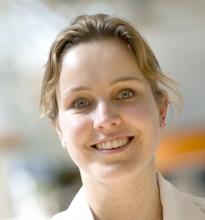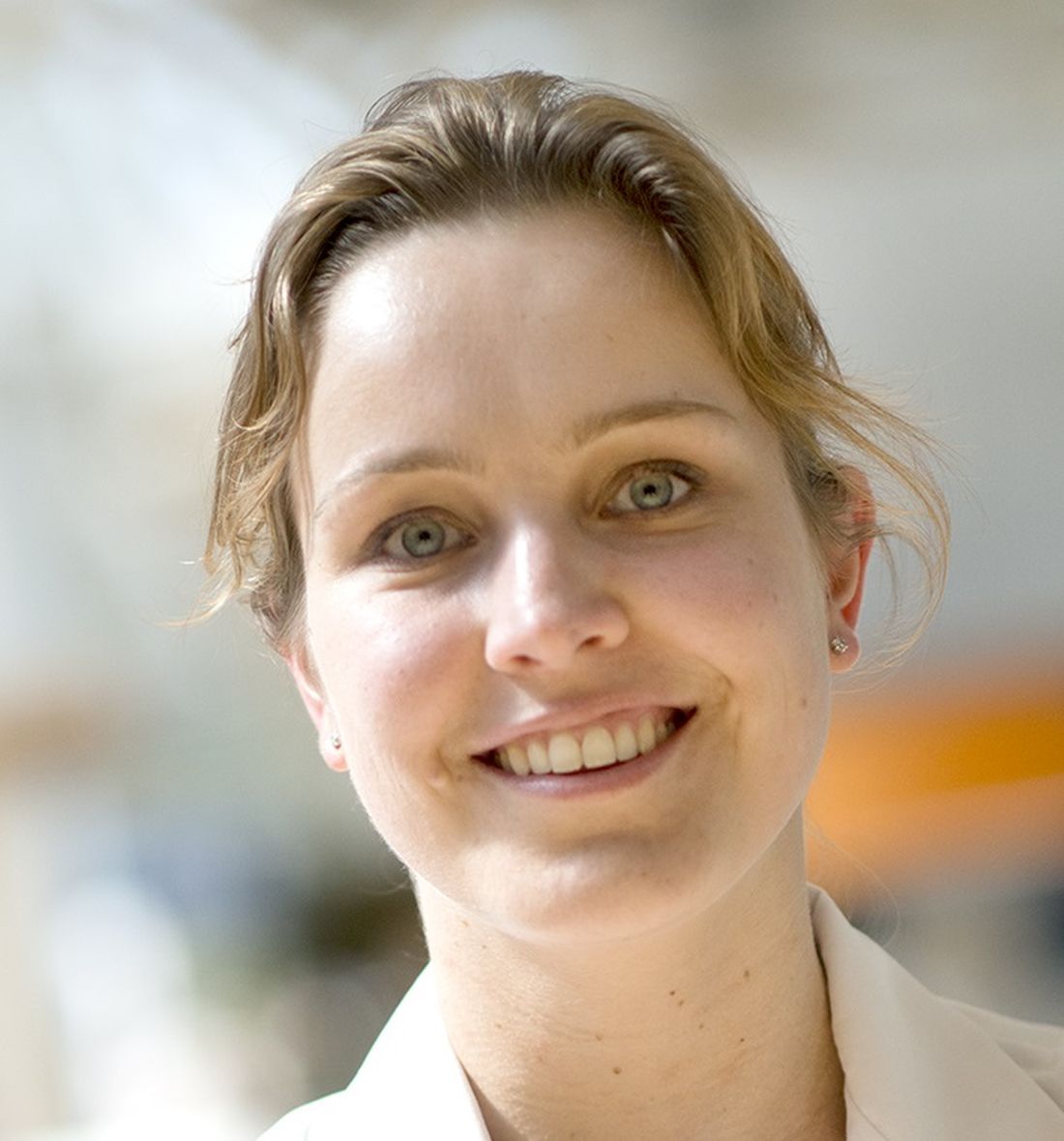User login
The results were reported at the European Society for Radiology and Oncology 2020 Online Congress.
“We know that local recurrences most often occur at the location of the primary tumor or the dominant intraprostatic lesion, and we also know that biochemical disease–free survival improves with increasing dose to the whole prostate gland,” said principal investigator Linda G.W. Kerkmeijer, MD, PhD, of Radboud University Medical Center Nijmegen, the Netherlands.
However, “with whole-gland dose escalation, increased toxicity has been observed in both external-beam and brachytherapy trials,” she added.
FLAME trial details
A total of 571 patients took part in the FLAME trial, which is a collaboration of UMC Utrecht, the Netherlands Cancer Institute, University Hospitals Leuven, and Radboudumc.
The patients were randomized evenly to standard radiation therapy alone (77 Gy to the whole prostate in 35 fractions of 2.2 Gy) or with an integrated boost to the macroscopically visible tumor on multiparametric MRI (to reach a total dose of up to 95 Gy in 35 fractions of 2.7 Gy).
In treatment planning, the organs-at-risk constraints were prioritized over the focal boost dose, Dr. Kerkmeijer pointed out.
A majority of patients (84%) had high-risk disease, and two-thirds received hormonal therapy (usually in the adjuvant setting) with equal distribution across study arms, she reported.
With a median follow-up of 72 months, the 5-year rate of biochemical disease–free survival, the trial’s primary endpoint, was superior with the addition of the focal boost as compared with standard radiation therapy alone (92% vs. 85%; P < .001).
The boost also netted significantly better disease-free survival (P < .001).
The arms were similar on distant metastasis–free survival (P = .26), prostate cancer–specific survival (P = .49), and overall survival (P = .50), although longer follow-up is needed to fully assess these outcomes, Dr. Kerkmeijer noted.
The boost and standard therapy arms had much the same late grade 3 or higher genitourinary toxicity (5.6% vs. 3.5%; P = .22) and late grade 3 or higher gastrointestinal toxicity (1.4% vs. 1.4%; P = .99).
The arms were essentially identical on long-term patient-reported urinary symptoms, bowel symptoms, sexual activity, and sexual function, as measured with the EORTC QLQ-PR25 tool and detailed in a companion presentation (abstract OC-0315).
‘A standard option’ and next steps
“FLAME is the first phase 3 randomized controlled trial to show that focal boosting works and that biochemical recurrence was reduced at 5 years,” Dr. Kerkmeijer said. “We propose that the FLAME scheme can be considered as a standard option for patients with intermediate- but especially high-risk prostate cancer.”
“For patients, biochemical recurrence may have impact, as this causes additional follow-up and diagnostic exams, potential anxiety, and potential side effects of subsequent treatments,” she added. “Biochemical recurrences were reduced by almost half and at no additional cost and no additional toxicity by this FLAME isotoxic approach and by using conventional radiotherapy techniques.”
The next step is pairing the boost with ultra-hypofractionation, which requires highly accurate targeting, Dr. Kerkmeijer said. In fact, favorable early toxicity results of the subsequent Hypo-FLAME trial, which tested this strategy, were also reported at the congress (abstract OC-0209), and a trial taking the strategy even further, Hypo-FLAME 2.0, is ongoing.
“The FLAME trial’s results are probably true but may have been impacted by the use of hormonal therapy,” Anthony V. D’Amico, MD, PhD, of the Dana Farber Cancer Institute and Harvard Medical School, Boston, said in an interview.
Any imbalance in the use and duration of hormonal therapy, given that it can delay the time to prostate-specific antigen failure, could lead to overestimation or underestimation of the benefit of the focal boost, with respect to the primary endpoint of the study, he elaborated. Typical durations of this therapy range from 4 to 6 months for patients with intermediate-risk disease and from 18 to 36 months for patients with high-risk disease.
“So it’s important to know and to adjust not just for hormonal therapy use, but for duration between the two arms, stratified by risk group, in a multivariable regression analysis,” Dr. D’Amico concluded.
The FLAME trial was funded by the Dutch Cancer Society and Stand Up Against Cancer Belgium. Dr. Kerkmeijer and Dr. D’Amico disclosed having no conflicts of interest.
SOURCE: De Boer HCJ et al. ESTRO 2020. Abstract OC-0612.
The results were reported at the European Society for Radiology and Oncology 2020 Online Congress.
“We know that local recurrences most often occur at the location of the primary tumor or the dominant intraprostatic lesion, and we also know that biochemical disease–free survival improves with increasing dose to the whole prostate gland,” said principal investigator Linda G.W. Kerkmeijer, MD, PhD, of Radboud University Medical Center Nijmegen, the Netherlands.
However, “with whole-gland dose escalation, increased toxicity has been observed in both external-beam and brachytherapy trials,” she added.
FLAME trial details
A total of 571 patients took part in the FLAME trial, which is a collaboration of UMC Utrecht, the Netherlands Cancer Institute, University Hospitals Leuven, and Radboudumc.
The patients were randomized evenly to standard radiation therapy alone (77 Gy to the whole prostate in 35 fractions of 2.2 Gy) or with an integrated boost to the macroscopically visible tumor on multiparametric MRI (to reach a total dose of up to 95 Gy in 35 fractions of 2.7 Gy).
In treatment planning, the organs-at-risk constraints were prioritized over the focal boost dose, Dr. Kerkmeijer pointed out.
A majority of patients (84%) had high-risk disease, and two-thirds received hormonal therapy (usually in the adjuvant setting) with equal distribution across study arms, she reported.
With a median follow-up of 72 months, the 5-year rate of biochemical disease–free survival, the trial’s primary endpoint, was superior with the addition of the focal boost as compared with standard radiation therapy alone (92% vs. 85%; P < .001).
The boost also netted significantly better disease-free survival (P < .001).
The arms were similar on distant metastasis–free survival (P = .26), prostate cancer–specific survival (P = .49), and overall survival (P = .50), although longer follow-up is needed to fully assess these outcomes, Dr. Kerkmeijer noted.
The boost and standard therapy arms had much the same late grade 3 or higher genitourinary toxicity (5.6% vs. 3.5%; P = .22) and late grade 3 or higher gastrointestinal toxicity (1.4% vs. 1.4%; P = .99).
The arms were essentially identical on long-term patient-reported urinary symptoms, bowel symptoms, sexual activity, and sexual function, as measured with the EORTC QLQ-PR25 tool and detailed in a companion presentation (abstract OC-0315).
‘A standard option’ and next steps
“FLAME is the first phase 3 randomized controlled trial to show that focal boosting works and that biochemical recurrence was reduced at 5 years,” Dr. Kerkmeijer said. “We propose that the FLAME scheme can be considered as a standard option for patients with intermediate- but especially high-risk prostate cancer.”
“For patients, biochemical recurrence may have impact, as this causes additional follow-up and diagnostic exams, potential anxiety, and potential side effects of subsequent treatments,” she added. “Biochemical recurrences were reduced by almost half and at no additional cost and no additional toxicity by this FLAME isotoxic approach and by using conventional radiotherapy techniques.”
The next step is pairing the boost with ultra-hypofractionation, which requires highly accurate targeting, Dr. Kerkmeijer said. In fact, favorable early toxicity results of the subsequent Hypo-FLAME trial, which tested this strategy, were also reported at the congress (abstract OC-0209), and a trial taking the strategy even further, Hypo-FLAME 2.0, is ongoing.
“The FLAME trial’s results are probably true but may have been impacted by the use of hormonal therapy,” Anthony V. D’Amico, MD, PhD, of the Dana Farber Cancer Institute and Harvard Medical School, Boston, said in an interview.
Any imbalance in the use and duration of hormonal therapy, given that it can delay the time to prostate-specific antigen failure, could lead to overestimation or underestimation of the benefit of the focal boost, with respect to the primary endpoint of the study, he elaborated. Typical durations of this therapy range from 4 to 6 months for patients with intermediate-risk disease and from 18 to 36 months for patients with high-risk disease.
“So it’s important to know and to adjust not just for hormonal therapy use, but for duration between the two arms, stratified by risk group, in a multivariable regression analysis,” Dr. D’Amico concluded.
The FLAME trial was funded by the Dutch Cancer Society and Stand Up Against Cancer Belgium. Dr. Kerkmeijer and Dr. D’Amico disclosed having no conflicts of interest.
SOURCE: De Boer HCJ et al. ESTRO 2020. Abstract OC-0612.
The results were reported at the European Society for Radiology and Oncology 2020 Online Congress.
“We know that local recurrences most often occur at the location of the primary tumor or the dominant intraprostatic lesion, and we also know that biochemical disease–free survival improves with increasing dose to the whole prostate gland,” said principal investigator Linda G.W. Kerkmeijer, MD, PhD, of Radboud University Medical Center Nijmegen, the Netherlands.
However, “with whole-gland dose escalation, increased toxicity has been observed in both external-beam and brachytherapy trials,” she added.
FLAME trial details
A total of 571 patients took part in the FLAME trial, which is a collaboration of UMC Utrecht, the Netherlands Cancer Institute, University Hospitals Leuven, and Radboudumc.
The patients were randomized evenly to standard radiation therapy alone (77 Gy to the whole prostate in 35 fractions of 2.2 Gy) or with an integrated boost to the macroscopically visible tumor on multiparametric MRI (to reach a total dose of up to 95 Gy in 35 fractions of 2.7 Gy).
In treatment planning, the organs-at-risk constraints were prioritized over the focal boost dose, Dr. Kerkmeijer pointed out.
A majority of patients (84%) had high-risk disease, and two-thirds received hormonal therapy (usually in the adjuvant setting) with equal distribution across study arms, she reported.
With a median follow-up of 72 months, the 5-year rate of biochemical disease–free survival, the trial’s primary endpoint, was superior with the addition of the focal boost as compared with standard radiation therapy alone (92% vs. 85%; P < .001).
The boost also netted significantly better disease-free survival (P < .001).
The arms were similar on distant metastasis–free survival (P = .26), prostate cancer–specific survival (P = .49), and overall survival (P = .50), although longer follow-up is needed to fully assess these outcomes, Dr. Kerkmeijer noted.
The boost and standard therapy arms had much the same late grade 3 or higher genitourinary toxicity (5.6% vs. 3.5%; P = .22) and late grade 3 or higher gastrointestinal toxicity (1.4% vs. 1.4%; P = .99).
The arms were essentially identical on long-term patient-reported urinary symptoms, bowel symptoms, sexual activity, and sexual function, as measured with the EORTC QLQ-PR25 tool and detailed in a companion presentation (abstract OC-0315).
‘A standard option’ and next steps
“FLAME is the first phase 3 randomized controlled trial to show that focal boosting works and that biochemical recurrence was reduced at 5 years,” Dr. Kerkmeijer said. “We propose that the FLAME scheme can be considered as a standard option for patients with intermediate- but especially high-risk prostate cancer.”
“For patients, biochemical recurrence may have impact, as this causes additional follow-up and diagnostic exams, potential anxiety, and potential side effects of subsequent treatments,” she added. “Biochemical recurrences were reduced by almost half and at no additional cost and no additional toxicity by this FLAME isotoxic approach and by using conventional radiotherapy techniques.”
The next step is pairing the boost with ultra-hypofractionation, which requires highly accurate targeting, Dr. Kerkmeijer said. In fact, favorable early toxicity results of the subsequent Hypo-FLAME trial, which tested this strategy, were also reported at the congress (abstract OC-0209), and a trial taking the strategy even further, Hypo-FLAME 2.0, is ongoing.
“The FLAME trial’s results are probably true but may have been impacted by the use of hormonal therapy,” Anthony V. D’Amico, MD, PhD, of the Dana Farber Cancer Institute and Harvard Medical School, Boston, said in an interview.
Any imbalance in the use and duration of hormonal therapy, given that it can delay the time to prostate-specific antigen failure, could lead to overestimation or underestimation of the benefit of the focal boost, with respect to the primary endpoint of the study, he elaborated. Typical durations of this therapy range from 4 to 6 months for patients with intermediate-risk disease and from 18 to 36 months for patients with high-risk disease.
“So it’s important to know and to adjust not just for hormonal therapy use, but for duration between the two arms, stratified by risk group, in a multivariable regression analysis,” Dr. D’Amico concluded.
The FLAME trial was funded by the Dutch Cancer Society and Stand Up Against Cancer Belgium. Dr. Kerkmeijer and Dr. D’Amico disclosed having no conflicts of interest.
SOURCE: De Boer HCJ et al. ESTRO 2020. Abstract OC-0612.
FROM ESTRO 2020


